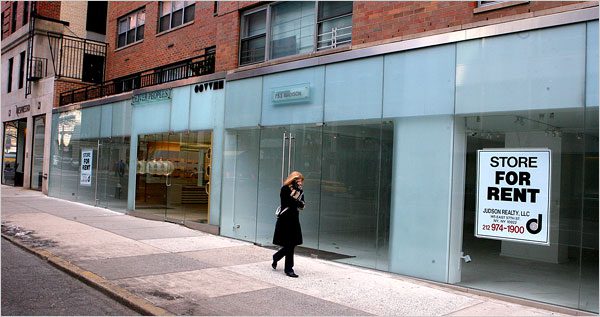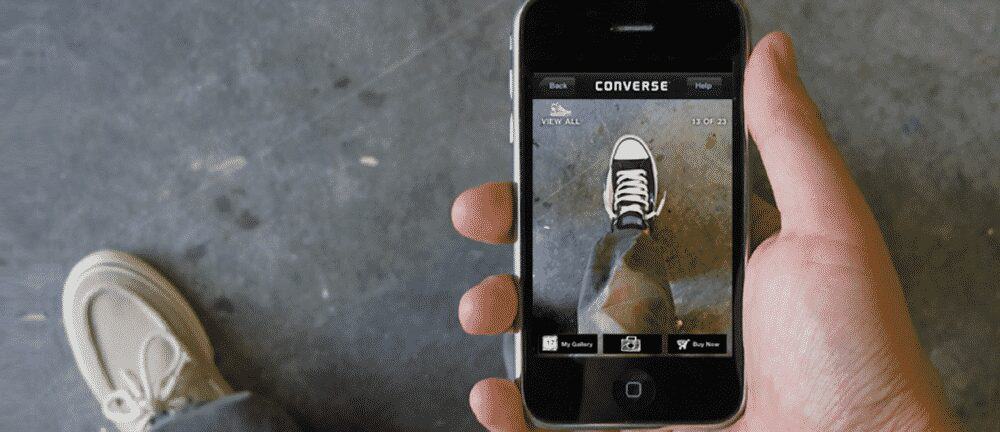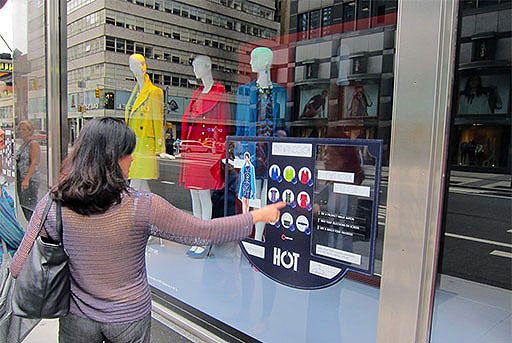Amazon’s always been the thorn in the side of brick and mortar retail. But now it appears they may use AR in retail stores of their own. You’ll still get the goods online, but only after checking them out in an augmented reality showroom. Amazon’s grocery stores and bookstores are already on the way, but their use of AR could take retail in an entirely new direction.
And of course, undercut other initiatives to use AR in retail such as Lowe’s innovative VR and AR projects.
The demise of retail as we know it

You may be noticing the transformation of retail already. Take a stroll through your mall or down the street of a major city. It’s not pervasive yet, but “For Lease” signs are popping up everywhere. There’s a host of factors contributing to an oversaturated market. And Amazon is one of them. It had 43% of all US online sales in 2016, up from 33% in 2015 and 25% in 2012 according to Business Insider. If you think things are not so bad, check the financial statements of traditional retailers like Macy’s, Sears and J.C.Penny’s. They all look like echoes of Blockbuster Video, the company that went down in flames, denying the impact of online video.
So Amazon contributes to demise of traditional retail. And then turns around to open their own brick and mortar stores. Painful, we know. But these stores would reinvent the retail experience. Just as they are toying with grab-and-go outlets without cashiers, Amazon’s proposed use of Augmented Reality would be different. As Timothy Laseter, a professor at the University of Virginia’s Darden School of Business, put it
Amazon is wonderful at frictionless commerce.
Call it an underhanded form of disruption if you like. Amazon is embracing the very activity that is killing contemporary retailers – showrooming. The act of checking out the items in a physical store and then buying them online. There’s apps to help you showroom and retailing strategies to counter them. You’ll go to the Amazon store to see the items, and then order them for delivery.
AR would also help Amazon get around the costs associated with stocking items in physical stores. And it may lower one of the hidden expenses of retailing – the cost of returns. Right now, 9% of in-store purchases are returned and online returns can range up to 25%-30% (especially for clothing and jewelry where there’s a trial and fit element involved).
Other companies are way ahead of Amazon in using VR/AR in the retail space. Take a look at the remarkable portfolio for Holition, a digital studio helping major brands use emerging technologies for immersive experiences. On the more pedestrian level, Tesco and Ikea already have AR apps that let you visualize products in your home. Look down at your feet and a Converse app lets you check out their shoes. Want to spend a little more, a DeBeers app will show you how those diamonds look around your neck.

Our shopping experience is already changing. Stores are adding social spaces and art installations to engage customers. One of our favorite examples is Samsung’s 837 flagship store in the Meatpacking Districting in NYC. Samsung’s products are on display but you can only buy them online. What’s really on display is an ethos that reflects what Samsung embodies. It hosts events, some VR rides too large for your living room, and lots of immersive and other tech demos. By creating an event space instead of a retail space, Samsung becomes part of your life. Whether you buy their products or not.
This is how you sell in the future.
AR in retail
Of course, the obvious question arises: if you are simply going to use AR in retail, why not just set up a virtual or augmented reality shopping experience from home? Why should Amazon even bother to open retail spaces? Mobile apps can work at home but most high-end VR and AR retail implementations will be store based. The hardware is not reliable enough and the cost puts the brakes on widespread adoption. And we need social VR – and/or some decent AI – for interaction with customers. It’s easier to bring someone into the store and have them do the VR/AR experience there. Lowe’s has got the right approach for the moment – let the mobile app reinforce the in-store immersive experience.
But all this is a temporary phase.
The major change will come from the widespread use of AR glasses, which will begin to roll out this year. However, there are still major challenges for AR glasses due to battery life and usability. As 9to5Mac noted, despite the rumors, Apple is probably a year away from releasing its own smart glasses. This fall we may not be getting anything more than an AR-enabled iPhone.
No matter what your interests are in terms of immersive technologies, keep an eye on the retail sector. It faces tremendous financial pressures, a highly competitive environment, and has innovative companies that can experiment with bottomless resources. Amazon’s current valuation? Around $400 billion. They can afford to fail.
What happens here will impact far more than just the way you buy that next pair of shoes or a kitchen table.

Emory Craig is a writer, speaker, and consultant specializing in virtual reality (VR) and artificial intelligence (AI) with a rich background in art, new media, and higher education. A sought-after speaker at international conferences, he shares his unique insights on innovation and collaborates with universities, nonprofits, businesses, and international organizations to develop transformative initiatives in XR, AI, and digital ethics. Passionate about harnessing the potential of cutting-edge technologies, he explores the ethical ramifications of blending the real with the virtual, sparking meaningful conversations about the future of human experience in an increasingly interconnected world.

